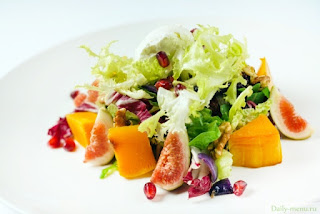Bolivian cuisine is popular not only in its homeland. The more native Bolivians travel abroad, and the more willingly foreigners visit Bolivia, the more often you can find typically Bolivian dishes or their recipes in restaurants, home kitchens and cookbooks around the world. Well-known not only in Bolivia, Saltenias or world-famous ingredients like quinoa, chuno and coca have long made their way
to the menu of many gourmets and simply curious cooks from other countries. And, on the contrary, numerous not only fashionable nowadays, but also healthy products from other parts of the planet have become available and are in great demand in modern Bolivian culinary. Increasingly, among the local chefs or culinary critics you can hear the term “fusion”, meaning for me personally that the national cuisine of Bolivia does not stand still, absorbing the innovations that provide knowledge about the culinary traditions of other nations and technological progress that allows translate this knowledge into the gastronomic life of the country.
Bolivian cuisine varies from region to region, depending on their geographical location, climatic conditions, culture and history. For example, most of the land in Western Bolivia is arid and mountainous, so in the local cuisine cereals prevail, and carbohydrate-rich foods such as potatoes and corn are prevalent. Typical recipes for local dishes most often include quinoa and mot (a type of Bolivian corn), used by the indigenous population (including the Incas) for more than one millennium.
In the east of Bolivia, agriculture and livestock farming are widespread. The climate here is tropical, so in the daily menu you can find not only beef traditional for these places, but also all kinds of vegetables. The abundance of fruits in the eastern regions of the country allows you to include them in many dishes, both sweet (for example, passion fruit mousse) and main (fried bananas).
Southern Bolivia is a territory where they produce a lot of quality wine. Many tourists come here to try the unique Bolivian Shingani, produced from vineyards located in the mountains high above sea level. The local cuisine in its image and likeness resembles the Argentinean one - with numerous snacks, fried beef and traditional cheese and fruit desserts.
In the north of Bolivia, the influence of Brazilian cuisine is noticeable. A typical example of such an effect is the acai juice fashion (stone fruit of a type of palm tree growing in Brazil).
In short, then, perhaps, for now. )) Now we can move on to the mutton recipe, which is typical for the inhabitants of the mountainous region of Parinacota, located on the border with Chile.
Ingredients for Lamb:
- Two lamb shoulder blades with a total weight of up to 2 kg (chop together with a bone across into pieces up to 3-4 cm wide)
- 200 ml dry white wine
- 1 teaspoon coriander seeds (fry and roughly chop in a mortar)
- Half a teaspoon of zira (fry)
- 10-12 peas of allspice (rough detail)
- A third of cinnamon sticks
- 2 clove buds
- Olive oil
- Sea salt
Garnish ingredients:
- 600 grams of pumpkin pulp (cut into thick bars)
- 2 large heads of fennel (cut the stems and rhizome, disassemble into leaves and cut along narrow segments)
- 2 tablespoons of light honey
- Olive oil
- Sea salt
- Hot black pepper
- Spicy seasoning ingredients:
- 2 pods of pickled chili pepper (remove seeds, cut into wide rings - up to 1 cm)
- 3 large cloves of garlic (peel and squeeze through a garlic press)
- 1 large bunch of cilantro (separate leaves)
- Half a tablespoon of brown sugar
- Freshly squeezed juice and zest of one lime
- Salt
Cooking:
Let's start by making the lamb. To do this, salt and pepper pieces of meat. Let stand for about 1-2 hours.
After that, in a large stewpan over medium-low heat we heat 4 tablespoons of oil and fry the pieces of lamb from all sides until a golden brown crust forms on the meat. Transfer to a bowl and cover with a film.
Pour wine into a stewpan and use a wooden spatula to degass.
We return the pieces of lamb to the stewpan and pour hot boiled water so that it covers the fried meat by half.
Add coriander seeds, zira, allspice, cloves and cinnamon. Bring to a boil and cook on the low heat for about three hours (when ready, the meat should very easily separate from the bone).
We take out the finished lamb from the stewpan using a slotted spoon and place it on a cutting board. Allow to cool slightly and disassemble into small fibrous pieces. Fold again in a deep bowl and cover with foil.
Then we can cook the hot seasoning. To do this, mix all the seasoning ingredients and let stand for half an hour.
Meanwhile, in a large frying pan we heat 3 tablespoons of oil and honey. When honey begins to bubble, the treasure
eat slices of pumpkin and fennel in a pan, and fry until the vegetables are well browned and soft. Salt and pepper.
Add lamb and seasoning to the pan. Mix and try on the salt.
Serve warm with fresh tortillas or pita bread to the table.

Comments
Post a Comment